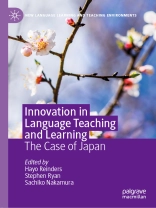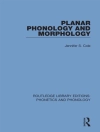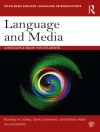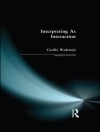This book examines a wide range of innovations in language learning and teaching in Japan. Each of the chapters describes the impetus for a change or new development in a particular context, from early childhood to adult learning, details its implementation and provides an evaluation of its success. In doing so, they provide a comprehensive overview of best practice in innovating language education from teaching practice in formal classroom settings, to self-directed learning beyond the classroom, and offer recommendations to enhance language education in Japan and beyond. The book will be of interest to scholars of applied linguistics and language development, and in particular to those involved in managing change in language education that attempts to mediate between global trends and local needs.
Table of Content
Chapter 1. The Scope of Innovation in Japanese Language Education; Hayo Reinders, Sachiko Nakamura, and Stephen Ryan.- Chapter 2. English in Japan in an era of global uncertainty; Philip Seargeant.- Chapter 3. CLIL in comparison with PPP: A ‘revolution’ in ELT by competency-based language education; Makoto Ikeda.- Chapter 4. Innovations in elementary classrooms: Integrating the teaching of English, history, and peace linguistics; Noriko Ishihara, Terumi Orihashi, and Zachary Clark.- Chapter 5. Inviting children’s views for designing digital game tasks; Yuko Goto Butler.- Chapter 6. Learning across generations: A small-scale initiative; Stephen Ryan and Kay Irie.- Chapter 7. It’s Your Turn: EFL Teaching and Learning with Tabletop Games; James York, Jonathan de Haan, and Peter Hourdequin.- Chapter 8. What Does “Teaching English as a Lingua Franca” Mean? Insights from University ELF Instructors’ Voices; Ayako Suzuki.- Chapter 9. Developing a Foreign Language Geragogy: Teaching Innovations for Older Learners; Danya Ramírez-Gómez.- Chapter 10. Self-Access Learning and Advising: Promoting Language Learner Autonomy Beyond the Classroom; Jo Mynard.- Chapter 11. An Insider’s View: Launching a University Program; Kay Irie.- Chapter 12. Innovating with the “The Collaborative Social” in Japan; Tim Murphey.- Chapter 13. An Innovative Approach to In-service Teacher Training for Teaching English at Japanese Public Elementary Schools; Maiko Ikeda, Hiroyuki Imai, and Osamu Takeuchi.- Chapter 14. Innovation in Japan: Looking to the Future; Stephen Ryan, Sachiko Nakamura, and Hayo Reinders.
About the author
Hayo Reinders is TESOL Professor and Director of the doctoral programme at Anaheim University, USA and Senior Research Advisor to Kanda University in Tokyo, Japan. He is founder of the global Institute for Teacher Leadership.
Stephen Ryan is a professor in the School of Culture, Media and Society at Waseda University in Tokyo, Japan. He has been involved in English language education for over 25 years, mostly based in Japan.
Sachiko Nakamura is a doctoral candidate in Applied Linguistics at King Mongkut’s University, Thailand. Her research areas include the psychology of language learning and self-regulated learning, and her current research focuses on emotions of language learners and emotion regulation strategy instruction.












